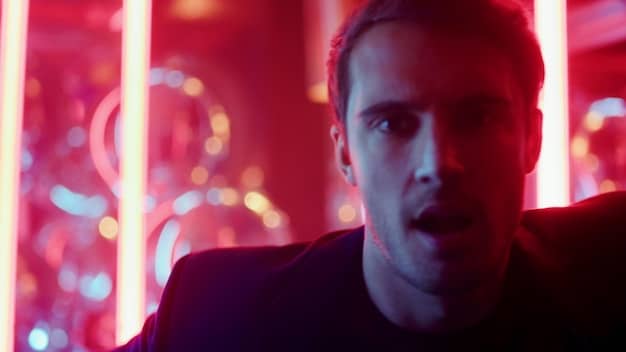Decoding Movie Endings: Controversial Films and Their Real Meanings

Decoding Movie Endings: 3 Films with Controversial Finales and What They Really Mean explores the ambiguous and thought-provoking conclusions of iconic movies, offering in-depth analysis and interpretations that challenge viewers’ perceptions and spark debate.
Ever wondered what a movie ending *really* meant? Decoding Movie Endings: 3 Films with Controversial Finales and What They Really Mean delves into the ambiguous, debated, and downright mind-bending conclusions of some of cinema’s most iconic films. Get ready to question everything you thought you knew.
Unraveling Ambiguity: Why Movie Endings Matter
Movie endings are crucial. They are the final statement, the lingering impression, and often, the most discussed aspect of a film. But what happens when an ending isn’t clear-cut? When interpretations vary wildly, and the director seems to revel in the ambiguity? This is where the art of decoding begins.
Controversial movie endings often serve a higher purpose. They challenge our perceptions, force us to confront uncomfortable truths, and stay with us long after the credits roll. Let’s explore why these endings are so impactful.
The Power of Interpretation
Ambiguous endings invite audience participation. They transform viewers from passive recipients into active interpreters, engaging their critical thinking and personal experiences to construct meaning.
- Multiple viewpoints create discussions and debates.
- Personal experiences shape individual understanding.
- The director’s intent becomes secondary to the viewer’s.
Avoiding Simple Resolutions
Life is rarely simple, and neither are truly great films. By eschewing easy answers, controversial endings mirror the complexities of the human condition.

The ending makes you think about reality for yourself beyond the movie.
A satisfying conclusion doesn’t always mean a happy one.
Ultimately, the impact of a controversial ending lies in its ability to provoke and stimulate thought.
This first section has highlighted the importance and impact of ambiguous endings. Now, we will look at three movies with endings that are sure to make you think.
*Blade Runner 2049*: Humanity, Replicants, and the Tears in the Rain
*Blade Runner 2049*, directed by Denis Villeneuve, presents a futuristic world where the lines between humans and Replicants (bio-engineered beings) are blurred. The ending, which sees K (Ryan Gosling), a Replicant Blade Runner, seemingly sacrificing himself for Deckard (Harrison Ford) and his daughter, is rife with questions.
Is K truly acting out of selfless heroism, or is he driven by a programmed sense of duty? The film’s final moments leave the audience pondering the essence of humanity and what it truly means to be alive.
The Question of Free Will
K’s journey revolves around the search for identity and purpose. His final act raises profound questions about whether Replicants are capable of genuine free will or simply following pre-determined paths.
- Is K’s sacrifice a testament to his evolving humanity?
- Or is he merely fulfilling his programming as a Blade Runner?
- The film offers no easy answers, leaving the audience to grapple with these moral dilemmas.
Symbolism of the Snow
The closing scene, set against a backdrop of falling snow, is visually striking. The snow could symbolize several things, including purity, cleansing, or even the erasure of identity.
The setting might also represent something related to Replicants or the company that makes them.

This ending emphasizes the theme of artificiality and the search for meaning in a synthetic world.
The enduring impact of *Blade Runner 2049*’s finale lies in its profound exploration of identity, free will, and the very definition of what it means to be human.
The ambiguity surrounding K’s motives and the symbolic weight of the snow-covered landscape ensure that this ending lingers long after the credits have rolled.
*Inception*: Spinning Tops and the Nature of Reality
Christopher Nolan’s *Inception* is a mind-bending thriller that explores the realm of dreams and the power of suggestion. The ending, which shows Dom Cobb (Leonardo DiCaprio) reuniting with his children but never confirming whether he’s still in a dream, has become one of the most debated in cinematic history.
The scene cuts *just* before whether or not his totem (a spinning top) topples, leaving the audience to decide whether Cobb is truly back in reality or lost in a fabricated dream world.
The Totem as a Symbol
Cobb’s totem is intended to be his anchor to reality, a way to distinguish between the real world and the dream world. The ambiguity surrounding its final spin throws the entire narrative into question.
Is Cobb concerned with the totem or is he just happy to see hits kids?
Maybe Cobb doesn’t care anymore.
Nolan’s Intentional Ambiguity
Christopher Nolan has stated that he intentionally created the ending to be ambiguous, wanting the audience to focus on Cobb’s emotional journey rather than a definitive answer.
- He wants viewers to consider the nature of reality.
- The film is more about Cobb’s personal redemption.
- People can also find their own meaning in the ambiguous ending.
Nolan wants to provide an answer about the character over what is real.
*Inception*’s ending is a masterclass in ambiguity, perfectly encapsulating the film’s exploration of the fluid and unreliable nature of reality. The unresolved fate of Cobb’s totem and the intentional lack of closure force the audience to confront their own perceptions and beliefs.
The brilliance of *Inception*’s ending lies in its ability to resonate with audiences on a deeply personal level, as each viewer brings their own interpretation to the table.
*Fight Club*: Anarchy, Identity, and the Subversion of Consumerism
*Fight Club*, directed by David Fincher, is a cult classic that critiques consumerism and societal norms. The ending, which features the Narrator (Edward Norton) destroying the headquarters of the credit card companies and seemingly embracing his alter ego, Tyler Durden (Brad Pitt), is a nihilistic and subversive statement.
The film’s finale is a bold declaration of independence from societal constraints, but it also raises questions about the consequences of such extreme actions. Is it freedom or further entrenchment?
The Duality of the Narrator
The revelation that Tyler Durden is a figment of the Narrator’s imagination highlights the internal conflict and fractured identity of the protagonist.
Tyler is everything the narrator can’t be.
The ending is a metaphor of self-acceptance.
The Meaning of Destruction
The destruction of the credit card companies symbolizes the rejection of consumerism and the desire to dismantle the structures of modern society.
- Tyler wants to erase debt to reset everything.
- The movie says society is more important than money.
- What is the cost though?
This action represents a radical attempt to liberate oneself from financial burdens and societal expectations, creating a new world free from the constraints of consumerism.
*Fight Club*’s ending is a powerful and provocative statement about identity, rebellion, and the dangers of societal conditioning. The Narrator’s embrace of chaos and destruction forces the audience to confront their own complicity in a consumer-driven culture.
The movie’s message of self-discovery and the rejection of societal norms continues to spark debate about the true meaning of freedom and the consequences of extreme actions.
The Art of the Unresolved Ending
What makes a controversial movie ending so compelling? It’s the unresolved nature, the ambiguity that lingers, and the questions that stay with us long after the credits roll. These endings encourage us to engage with the film on a deeper level, prompting reflection, interpretation, and ultimately, a more meaningful experience.
Great movie endings transcend the boundaries of entertainment and become thought-provoking explorations of the human condition.
Challenging Expectations
Controversial endings defy our expectations. They subvert our desire for neat resolutions and challenge our assumptions about right and wrong, good and evil.
Life is not always clean.
Things change over time.
Leaving a Lasting Impression
Memorable endings stay with viewers. The best endings allow us to consider our own actions.
Unclear movie endings create discussions.
Viewers are more engaged.
The Value of Interpretation
Allowing viewers to create their own conclusions makes the film better. This also helps give people more enjoyment from the movie.
Many think this what all movies should do.
Ambiguous endings encourage audience participation.
Now that we have looked at the importance of vague or confusing movie endings, consider these points while you watch your next movie.
Final Thoughts: The End is Just the Beginning
Ultimately, the power of decoding a movie ending lies in the journey of interpretation. It’s about engaging with the film on a personal level, challenging our own perspectives, and embracing the ambiguity that life often throws our way.
| Key Point | Brief Description |
|---|---|
| 🤔 Ambiguous Endings | Invite various interpretations, enhancing viewer engagement and discussion. |
| 🤖 Blade Runner 2049 | The ending questions free will and personal sacrifice in a world of replicants. |
| 🌀 Inception | Its final scene blurs reality and dreams, leaving viewers to decide what’s real. |
| 👊 Fight Club | Challenges consumerism and explores fractured identity through radical actions. |
Frequently Asked Questions
Filmmakers often use them to provoke thought and challenge viewers, rather than provide simple answers. This also adds a layer of complexity and invites the audience to interpret the story.
Ambiguous endings tend to generate discussion and debate, keeping the movie relevant long after the premiere. This makes viewers active participants in the storytelling process.
Usually ends are described as controversial if they divide opinion, challenge viewers beliefs, they subvert audience expectations, or are open to many different interpretations.
While frustrating for some, these endings often elevate a film. A poorly executed ending might lead to dissatisfaction, while a well-crafted one can create more engagement.
They should start by considering the film’s themes, director’s style, and personal emotional reactions. Every detail may reveal something so be sure to pay close attention.
Conclusion
As we conclude this journey through the labyrinthine world of controversial movie endings, remember that the true beauty lies in the eye of the beholder. Embrace the ambiguity, question the answers, and continue to explore the endless possibilities that cinema offers.





